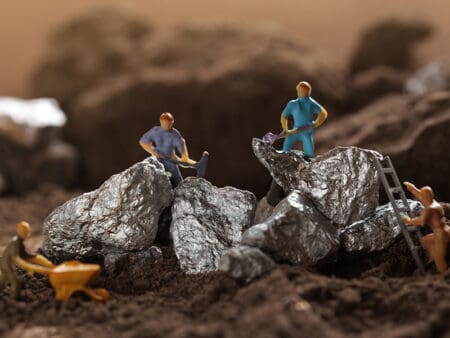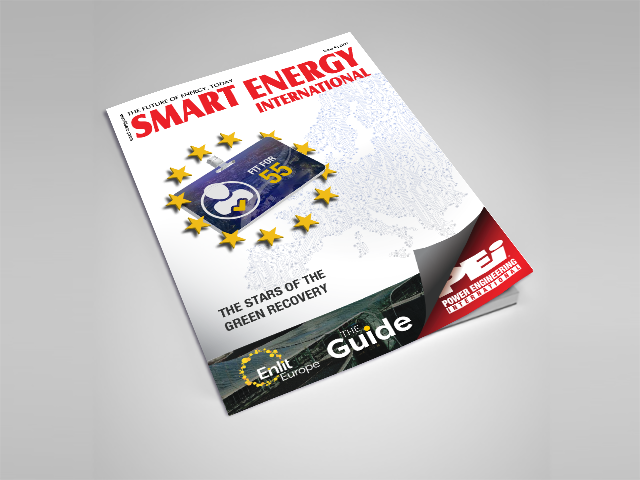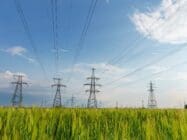
IRENA’s Dolf Gielen explores the role of critical raw materials in Europe’s green recovery and the supply and demand challenges the continent might be facing.
Europe has made the energy transition a centrepiece of its recovery agenda. The greenhouse gas (GHG) emission reduction objective was recently raised to 55% by 2030, implying a considerable acceleration of the efforts to date. For renewable energy, a new 40% target has been proposed for 2030, up from a 20% share in 2020. This implies a doubling of the renewables growth rate compared to the last decade.
This article was originally published in Smart Energy International Issue 4-2021.
Read the mobile-friendly digital magazine or subscribe to receive a print copy

The energy transition requires massive growth in renewable power generation, a shift to electromobility, more production of green hydrogen and an acceleration of building renovation. And it’s not only Europe that wants to move in this direction but the entire world. As this year’s World Energy Transitions Outlook made clear: The transition needs are daunting but urgent.
In recent months, attention has focused on the material implications of such a transition. Rising prices of critical materials such as copper, lithium, neodymium and nickel have raised concerns. Car manufacturers, such as Volkswagen, see materials access as a potential business risk and focus on securing long-term supply contracts.
Policy makers have also woken up to the challenge. Following the 2020 communication from the European Commission on Critical Raw Materials (CRM), an industrial alliance dedicated to securing a sustainable supply of raw materials in Europe was launched. This European Raw Materials Alliance (ERMA) brings together relevant stakeholders along strategic value chains and industrial ecosystems. It will initially focus on the most pressing needs, namely to increase EU resilience in the rare earth elements and permanent magnet value chains. Also, the Joint Research Centre of the European Commission has a well-established programme to track critical raw materials.
Supply risks
The COVID-19 crisis has shown that global supply chains can be disrupted by sudden, unforeseen events. The supply of solar PV panels and wind turbine gearboxes was somewhat affected. Yet these bottlenecks were quickly resolved while the supply of computer chips remains a bottleneck across many sectors. There is a fear that traditional geopolitical risks related to oil and gas supply may in the future shift to critical materials supply.
Materials prices provide an indication of the supply and demand balance. Recent price increases have raised considerable interest from investors and even the energy transition naysayers have jumped on the bandwagon. The term “greenflation” has been introduced for rising prices for metals and minerals such as copper, aluminium and lithium that are essential to solar and wind power, electric cars and other renewable technologies:
• In the case of lithium, prices peaked at $27/kg at the end of 2017, followed by a rapid decline and a price trough of $6/kg in the summer of 2020, followed by a recovery to $14/kg in July 2021.
• Neodymium has hovered around $60/kg for a long time and climbed to $120/kg this year.
• Nickel sold for $10/kg in 2017 and has risen continuously to nearly $20/kg this year.
• Cobalt sold for $30/kg in 2017, reached more than $90/kg in 2018, and dropped back to $30/kg in 2019. It has since recovered to more than $50/kg this year.
• Copper has for a long time hovered at $6-7/kg, only to rise to $10/kg in the course of the last year.
It is remarkable that prices have risen markedly for all these metals in recent months, in some cases to levels that we have not been seen before. There is clearly a link with rapidly growing demand related to energy transition. What is unclear, however, are the price dynamics moving forward since prices tend to fluctuate and increases can be followed by sharp declines. Prices may continue to rise and eventually limit demand growth, or supply may rise in response to higher prices.
Longer term, reserve and resource data provide insights regarding availability, and a comparison of potential demand and availability provides insights regarding scarcity. Such comparisons are dynamic as resources and reserves may increase as exploration and mining technologies advance. For example, subsea metal nodules contain cobalt and nickel. If their mining takes off, supply may be substantially increased in the long run.
The key challenge is not resource endowment but rather the ability to ramp up supply substantially in the coming years while diversifying suppliers.
Europe needs rare earth metals
The name rare earth refers to a group Rare Earth Elements (REEs), also called rare earth metals and rare earth oxides. This group of seventeen chemical elements is moderately abundant in the earth’s crust, with unique properties. Rare earths, notably neodymium and dysprosium, are widely used for permanent magnets in electric generators (e.g. in wind turbines) and in electric motors (for electric vehicles). 1MW of wind turbine capacity (notably offshore turbines) may require around 500kg of permanent magnets; a typical electric vehicle requires around 1-2kg of magnets. Globally, these applications could require around 150kt (kilotons) of annual permanent magnet production by 2030.
Neodymium-Iron-Boron magnets, because of their high-energy products, lend themselves to compact designs that result in innovative applications and lower manufacturing costs. In commercial sintered NdFeB magnets, neodymium is usually partially substituted by other rare earth elements including praseodymium (Pr), dysprosium (Dy) and terbium (Tb). Because Nd and Pr elements usually coexist in ore and these two elements have similar physical and chemical properties, it is more economical to produce PrNd alloy instead of pure Nd metal from ore and to use PrNd alloy as the raw material of the magnet.
In general, the total rare earth element content is around 30 weight % in the magnet, and its material cost accounts for around 70% or more of the total magnet cost. An even more important issue than availability of neodymium is the availability of dysprosium. For neodymium magnets to perform at elevated temperatures, they require dysprosium at up to 12 weight %. In terms of relative abundance in the crust of the earth, dysprosium is less than 1% of all rare earths.
Rare earth metal production was on the rise again in 2020, jumping to 240kt worldwide. The principal economic sources of rare earths are minerals and clays. These resources contain different types of rare earth metals which are often coproduced. Neodymium is typically 10–18% of the rare earth content of commercial deposits of the light rare-earth-element minerals bastnäsite and monazite. Although the main mining areas are in China, others are also found in the United States, Brazil, India, Sri Lanka, and Australia. Global reserves of neodymium are estimated at about eight million tonnes, making it the second most abundant rare earth after cerium.
According to the US Geological Survey, Greenland holds the largest reserves of undeveloped rare-earth deposits, particularly neodymium. This offers the prospect of supply growth. However, developing mines and processing capacity outside of China has so far been hampered by economics, environmental concerns and the occurrence of radioactive uranium and thorium by-products in many deposits.
Apart from ramping up supply, efforts are ongoing to develop new high-performance magnet formulas and structures that avoid or minimise neodymium and dysprosium usage. Also, on the demand side, alternatives are actively being pursued in order to minimise materials dependency for electric vehicles and wind turbines but performance usually suffers. Recycling can help to limit demand growth but its role will be limited as usage grows.
What will the future hold?
While there is no single definition of critical materials, the energy transition requires the expansion of copper, lithium, nickel and various rare earth materials supplies. In certain cases, such as rare earth metals, no viable alternatives with similar performance are available today and demand is projected to increase significantly. That means new supplies must be found and developed. Europe is participating in the global dash for critical materials and will be impacted by the geopolitical implications.
Looking beyond rare earth metals, the region will have to increase the imports of such critical materials but can also try to expand its own production. The Kupferschiefer deposit in central Europe is renowned for hosting one of the most important copper deposits in the world, which has been mined for centuries. Most mines have closed but higher prices may warrant a reappraisal. Lithium reserves are being developed in Saxony and in the Upper Rhine valley. Nickel is mined in Finland but also in New Caledonia. New mining operations, however, often face local opposition and may take many years to come to fruition. International partnerships are therefore critical.
About the author
Dolf Gielen has been the Director of the International Renewable Energy Agency (IRENA) Innovation and Technology Centre in Bonn since 2011. He holds a PhD from Delft University of Technology in the Netherlands.
For more information visit www.irena.org
Resources
Summary report from the IRENA and United States Department of State joint virtual workshop on Minerals Criticality & the Energy Transition held June 2020; Read more.
IRENA (2021), World Energy Transitions Outlook: 1.5°C Pathway, International Renewable Energy Agency, Abu Dhabi; Read more.
IRENA (2019), A new world: The geopolitics of the energy transformation, International Renewable Energy Agency, Abu Dhabi; Read more.








